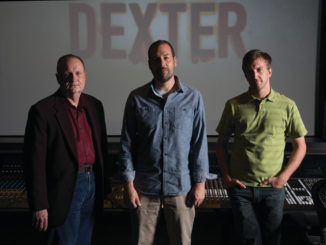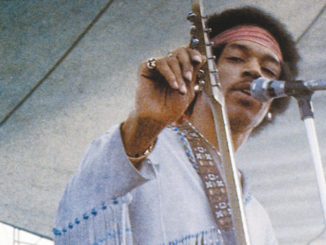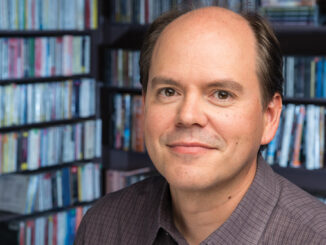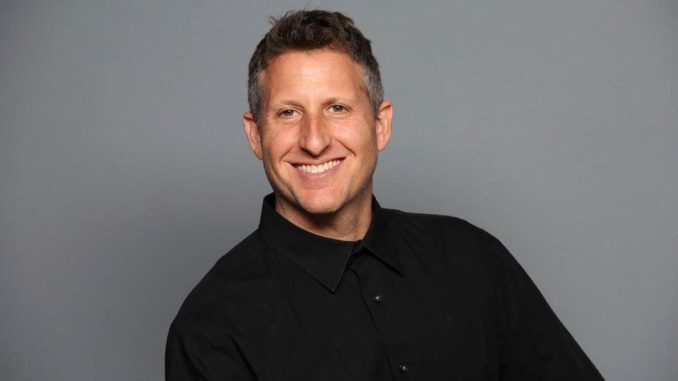
by Edward Landler
It is practically a given in our industry that the most prolific composers have a remarkable talent to provide effective scores for virtually any movie genre that comes their way. Examining the credits of the best known and most popular of these professionals confirms this at a glance.
Not surprisingly, the careers of the music editors responsible for weaving those scores and other music elements into a film in the most emotionally and aesthetically appropriate way reflect as great a grasp of the range of genres as those of the composers. And, surprisingly, standard procedure in the industry usually requires the music editor to set the emotional patterns for a movie with a temp score long before the composer even comes to work on a picture.
Sometimes music editors, more so than composers, find themselves working consistently on similar kinds of movies at different times during their careers. Rarely, however, does a music editor work on projects of such vastly different genres within a short time as Brian Bulman found himself doing recently. The hugely diverse results of his efforts will be seen in the August release of two movies — the raunchy R-rated animated comedy, Sausage Party, and the third theatrical feature adaptation of Lew Wallace’s Biblical epic, Ben-Hur.
Having worked for almost two decades on myriad variations of comedies and dramas, adventures and thrillers, cartoons and docs, Bulman says of these two recent pictures, “There’s no real difference between scoring animation and live action; the hard part is knowing the tone and then the timing. Everything after that is technical; like on animation, you find ways to manipulate the music to work with the picture… The most interesting job for me, though, is setting the emotional tone.”
Conceived by Seth Rogen and Evan Goldberg, Sausage Party shares some cast members and comic attitudes with their live-action apocalypse take-off This Is the End (2013). Their animated tale, however, tells the story of a sausage who discovers the purpose of his existence — to be eaten. Its raunchy tone reminds Bulman of working as assistant music editor on the industry’s most off-color R-rated animated feature of its time, South Park: Bigger Longer & Uncut (1999), for which he shared an MPSE Golden Reel Award for Music Editing in Animation.

For a couple of months early in 2015, Bulman worked on Party at Sony Studios in Culver City to help determine how and where they would use music while storyboarding was still in progress. Music supervisor Gabe Hilfer supplied him with songs that Rogen and directors Greg Tiernan and Conrad Vernon wanted to try in the film. Bulman also provided the temp score that would later give the composer of the film’s original score the emotional tone the filmmakers wanted.
Not surprisingly, the careers of the music editors responsible for weaving those scores and other music elements into a film in the most emotionally and aesthetically appropriate way reflect as great a grasp of the range of genres as those of the composers. And, surprisingly, standard procedure in the industry usually requires the music editor to set the emotional patterns for a movie with a temp score long before the composer even comes to work on a picture.
At this early stage, major creative music decisions needed to be made. Bulman recalls, “We were testing how vulgarity played accompanied by a traditional film score compared to a sexier rhythm and blues tune a la Barry White when establishing the ‘friends’ vibe of the sausages wrapped in their pack.”
To introduce a new day in the sausage factory, the music editor first spotted a Muzak track of Carpenters songs and then went with a “cheesy” Muzak version of Elton John’s “Candle in the Wind.” Also, he notes, “We wanted ‘source’ to fill the supermarket scene, and if the viewer recognized the song then there was that additional joke.”
With most pictures, as with Sausage Party and Ben-Hur, Bulman feels that “the music editor is the first to explore the emotional boundaries of a scene with music. Directors will have a general idea and maybe a specific idea, but the right music can pinpoint it for them… When music gets added to a scene, it’s like a lead or supporting actor walks into the room. The director lets up his control to another personality. That’s why a good music editor gives a lot of options.”
He added, “Sometimes I like to go too far, trying to imagine a scene’s emotional potential… The director gets a better idea of what he does and doesn’t want.”
On the animated Sausage Party, the editing department would send the music editor 10-minute QuickTime reels (shorter than the usual 16 minutes for live action films). After spotting and cuing all the music for the reel, Bulman would send QuickTimes to the key decision-making personnel with at least a couple of different ways of doing the scene.
“Then one of the directors calls me with notes, good notes… minimal,” Bulman says. “Once, about an hour after getting his notes, he sent me an e-mail to say that he showed my preferred cut to Seth Rogen. He liked it, so I could forget the notes.”
When the temp scoring process was completed, Bulman went back to work on two Warner Bros. TV series he had been working on before Sausage Party: The Following (2013-15) starring Kevin Bacon and Stalker (2014-15) starring Dylan McDermott. Party’s animation process was not complete enough yet to bring on composer, Christopher Lennertz (Bad Moms, 2016); when Lennertz joined the show, Daryl B. Kell (Across the Universe, 2007; Stardust, 2007) became its second credited music editor and did the final scoring and dub.
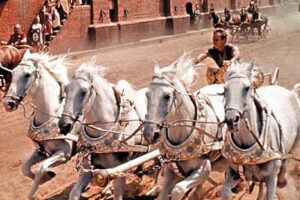
Meanwhile, near the end of 2015, Bulman started working on Ben-Hur in tandem with music editor Chris McGeary, MPSE, a three-time Emmy winner, all for his work on the sound editing crew of Smallville (2001-2011). Considered a “re-interpretation” of the Wallace novel, Ben-Hur’s original script by Keith R. Clarke was largely re-written by 12 Years a Slave (2013) writer John Ridley.
Shot in Italy from February through July, 2015, this new version stars Jack Huston and Morgan Freeman. It was directed by the Russian-Kazakh Timur Bekmambetov, best known in this country for Abraham Lincoln: Vampire Hunter (2012).
Before the music editors were brought in, the film’s first picture editor, Dody Dorn, ACE, had already done a full rough cut playing over two hours (the release version is 123 minutes). Having worked as a sound editor before becoming a picture editor, she had laid down a preliminary temp score before she left the project.
Coming to the show at the same time that Richard Francis-Bruce, ACE, came in as picture editor, the music editors decided to approach the task by working on alternating reels, with Bulman taking the even reels and McGeary the odd ones. They salvaged as much as they could of Dorn’s temp score and spotted the whole thing by the end of December.
Working in the sound studio he had built in his home in the mid-Wilshire district, Bulman mainly got feedback from the director and MGM Film Division President Jonathan Glickman, and later from composer Marco Beltrami, with whom he had worked on Max Payne (2008), and Bob Murawski, ACE, who took over as editor after Francis-Bruce.
As with Sausage Party, Bulman tried to give Bekmambetov options but with live action the nature of those options were often different. For example, in one scene, the music editor notes, “The director felt the actor wasn’t getting the emotion in and he wanted the composer to help with this. In this case, if you know someone is about to cry, do you start the music before or after the character starts crying?”
Another music-related problem arose during the sea battle scene. In this sequence, the Roman galley’s drummer is seen prominently above the rows of slaves, beating the tempo for their oaring. Composer Beltrami scored the percussive elements of the early part of the scene to hit in sync with the drummer’s beats.
After the first few minutes, though, the drummer did not appear again in the reel as it was cut and the director wanted more shots of him to be added. The music editor says, “This created the challenge of getting the drummer’s new visual beats to hit in sync with the score and still stay in rhythm with the on-screen rowing.
As the luck of alternating reels would have it, Bulman spotted the entire 10-minute chariot race, a sequence whose picture was virtually locked. The first five minutes would only have natural sounds, except for drums, and then music would come in toward the climax of the scene. After the first dub was screened on an MGM stage, it was decided to have music over the entire race, the director saying, “I want it to be more suspenseful with more of a build.” The music editor accommodated with a slow steady increase in tempo, using a pre-existing drum from the sea battle to enhance the existing score.
After the first mix was completed at Warner Brothers Studios, MGM screened the film for the faith-based community. The response from that screening compelled the producers to cut in more of the figure of Jesus and to add more about the early friendship between Judah Ben-Hur and the Roman Messala. The footage had been shot during principal photography but Beltrami had to compose more music, giving more work to music editors Bulman and McGeary. The final mix was done at Sony Studios in June.
Bulman grew up in Phoenix and after graduating from the University of Arizona, Tucson, learned audio technology at the Conservatory of Arts and Sciences in Tempe, which set him up with an internship at a recording studio in Boston. While working there on sound recording for local television, commercials and documentaries, he recognized his affinity for post-production.
Arriving in Los Angeles in 1997, he worked for Aspect Ratio, Inc., a trailer house where he got solid grounding in sound, dialogue and music editing and realized that regular jobs in music editing actually existed. He joined the Modern Music division of the now-defunct Todd Soundelux and then got his first assistant music editor credit on the remake of The Out-of-Towners (1999) starring Steve Martin and Goldie Hawn.
Among the diverse pictures whose music Bulman has worked on that he fondly recalls are the Farrelly Brothers’ Me, Myself and Irene (2000), because of its covers of Steely Dan songs, and Monster (2003), starring Charlize Theron, with its use of Journey’s Don’t Stop Believin’. Later, when he recorded a project for Journey lead Steve Perry, the singer showed up at his home studio with a gift of new speakers which he still uses. The music editor recalls, “He told me that I was like a Ferrari with a flat tire with my old speakers.” Of his music editing on Ben Stiller’s Tropic Thunder (2008), he says, “Some of the jokes were elevated by the timing and tone of the music.”
In 2011, after 12 years spent almost exclusively on features, he moved into TV to work on J.J. Abrams’ Bad Robot Productions’ series, Alcatraz (2012) with composers Michael Giacchino, Andrea Datzman and Chris Tilton, and Revolution (2012-14). Bulman says, “They hired me because they wanted someone with a lot of movie experience. I worked with the picture editors on laying down temp tracks and spotting the timing for both the music and the kind of music to use.”
After Sausage Party and Ben-Hur, 2016 will see the release of two more features demonstrating the wide range of this music editor’s work: The teen comedy, The Edge of Seventeen, starring Hailee Steinfeld and Woody Harrelson, and the action thriller The Foreigner starring Jackie Chan and Pierce Brosnan. He currently works with 2Pop Music.
Seeing the craft of music editing as a “linear time puzzle,” Bulman says, “What I love is when a director says, ‘I love this music. I love this tone. Make it work in the whole film.’”



